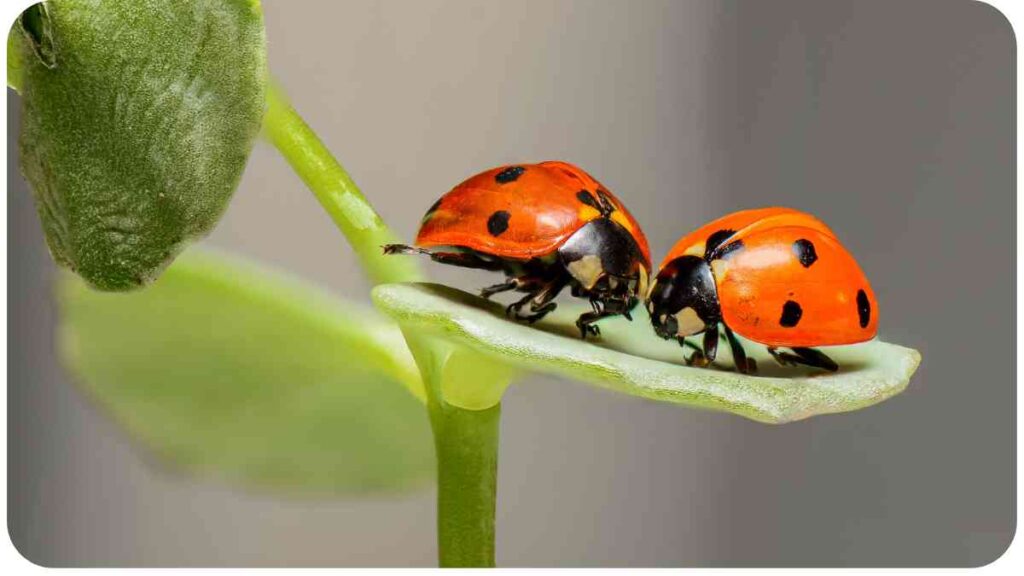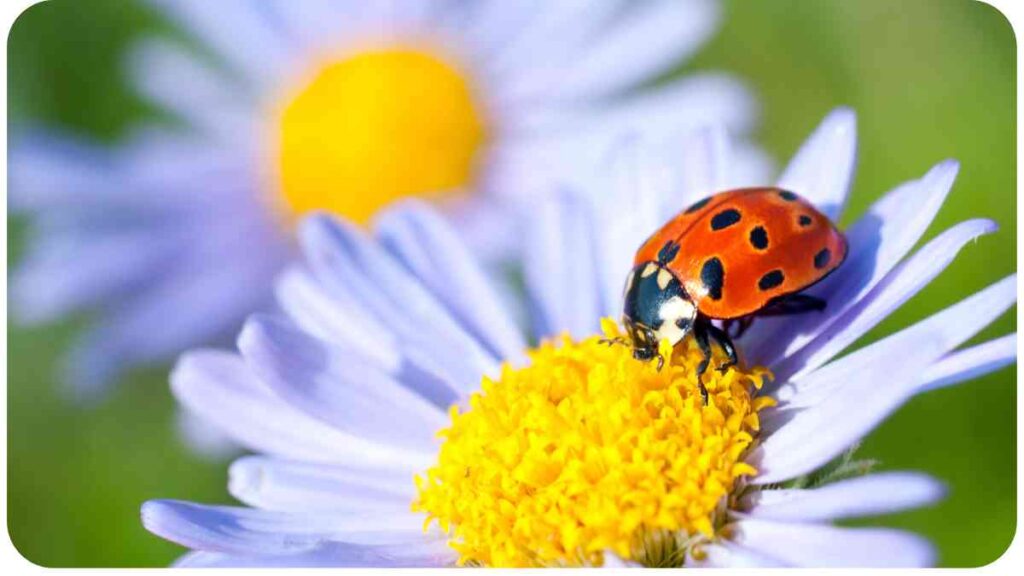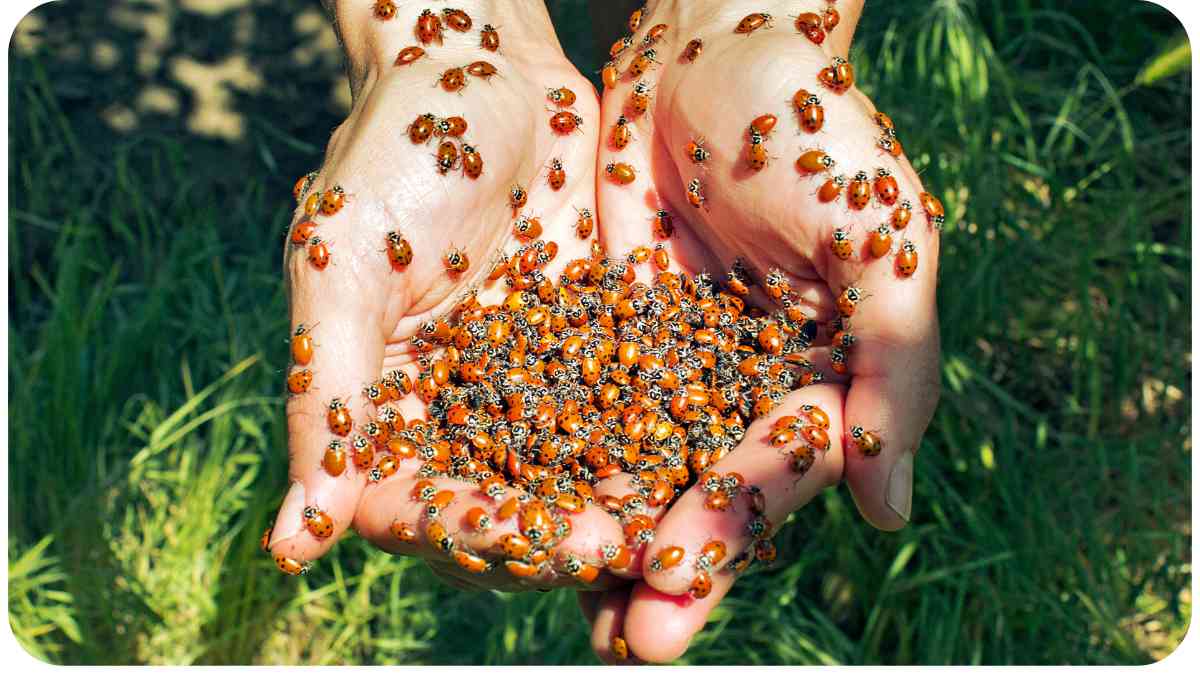Ladybugs, those tiny, spotted insects we often associate with good luck, are a common sight in gardens and homes around the world. But have you ever wondered why there seem to be so many ladybugs sometimes?
In this article, we’ll delve into the fascinating world of ladybugs, exploring their behavior, the factors behind their swarming tendencies, and the benefits they bring to the environment. Whether you’re a seasoned gardener or just curious about these charming creatures, read on to discover the secrets of the ladybug phenomenon.
| Takeaway |
|---|
| Ladybugs are valuable for natural pest control, making them a gardener’s ally. |
| Ladybugs are known for their symbolism of good luck and prosperity in various cultures. |
| Understanding the ladybug life cycle helps appreciate their fascinating development. |
| Ladybugs play a vital role in ecosystems, and climate change can affect their populations. |
| By creating ladybug-friendly environments, we can contribute to their conservation. |
2. The Fascinating World of Ladybugs

Before we unravel the mystery of why ladybugs gather in such large numbers, let’s take a moment to appreciate these remarkable insects. Ladybugs, also known as ladybirds or lady beetles, belong to the Coccinellidae family. They are known for their distinctive red or orange bodies adorned with black spots. These small beetles, typically ranging from 0.8 to 18 mm in size, have captured the hearts of many with their charming appearance.
When dealing with pests, it’s crucial to recognize the signs early on. You can find more about common pest infestations in our article on Signs of an Ant Infestation to Watch For. Understanding these signs can help you take timely action.
Table: Common Ladybug Species
| Species | Coloration | Habitat |
| Seven-Spotted Ladybug | Red with 7 spots | Gardens, fields |
| Asian Lady Beetle | Orange with spots | Urban and rural areas |
| Convergent Ladybug | Red with black lines | Meadows, forests |
Table: Ladybug Size Comparison
| Species | Length (mm) |
| Seven-Spotted Ladybug | 7-8 |
| Asian Lady Beetle | 6-8 |
| Convergent Ladybug | 5-6 |
3. The Ladybug Invasion: Why So Many?
Understanding Ladybug Behavior
Ladybugs, in their natural habitat, can be found munching on aphids, mealybugs, and other plant-damaging pests. They play a crucial role in maintaining ecological balance by acting as predators. However, there are times when their populations seem to explode. Why does this happen?
Ladybugs are social insects, and they release chemical signals called pheromones to communicate with one another. During certain times of the year, especially in the fall, ladybugs receive signals from their peers that trigger mass gatherings. This behavior, known as aggregation, is thought to be a survival strategy for overwintering.
Pest problems can take various forms, from ladybugs to mosquitoes. Discover the signs of mosquito infestations and how to address them in ‘The Buzz on Mosquito Infestations: Signs You May Have a Problem.
Table: Ladybug Aggregation Triggers
| Trigger | Effect |
| Temperature drop | Signals aggregation for warmth and shelter |
| Decreasing daylight | Indicates the approach of winter |
Factors Leading to Ladybug Swarms
Apart from social behavior, several factors contribute to ladybug swarms:
- Availability of Food: An abundance of aphids and other prey insects can lead to increased ladybug populations.
- Climate Conditions: Favorable weather conditions, such as mild winters and adequate rainfall, can boost ladybug numbers.
- Habitat Destruction: Urbanization and habitat loss can drive ladybugs to seek shelter in human-made structures.
- Migration: Some ladybug species are migratory and travel in large numbers to find suitable breeding and feeding grounds.
In the next sections, we’ll explore the benefits of ladybugs and how to handle ladybug infestations. Stay tuned!
4. The Benefits of Ladybugs

Ladybugs, beyond their charming appearance, offer significant benefits to ecosystems, agriculture, and even your backyard. Let’s dive into the advantages of having these little red beetles around.
Natural Pest Control
One of the most crucial roles that ladybugs play is that of natural pest controllers. Ladybugs are voracious predators of aphids, mealybugs, spider mites, and other garden pests. A single ladybug can consume hundreds of aphids in a day, making them a gardener’s best friend. Their presence reduces the need for chemical pesticides, promoting healthier and more sustainable gardening practices.
In addition to ladybugs, termites can wreak havoc in your home. Learn how to identify and eliminate termites in our guide on ‘Termites in Furniture: How to Identify and Eliminate Them.’ It’s essential to stay informed about various household pests.
Table: Ladybug Diet
| Pest | Ladybug’s Favorite Meal |
| Aphids | Yes |
| Mealybugs | Yes |
| Spider Mites | Yes |
| Scale Insects | Occasionally |
| Plant Pollen and Nectar | As a supplementary food |
Ladybugs in Agriculture
Ladybugs also have a significant impact on agriculture. Farmers often release ladybugs into their fields as a natural and environmentally friendly method of pest control. By reducing the population of crop-damaging insects, ladybugs contribute to higher crop yields and decreased reliance on chemical pesticides.
Table: Ladybugs in Agriculture
| Role | Impact |
| Pest Control | Reduces crop damage |
| Increased Crop Yields | Boosts productivity |
| Eco-Friendly Solution | Reduces chemical use |
5. Dealing with Ladybug Infestations
While ladybugs are beneficial, there may be times when their numbers become overwhelming, especially inside your home. Here are some tips on how to manage ladybug infestations without harming these helpful insects.
Having trouble with pests? Ladybugs aren’t the only challenge. Explore alternative solutions for pest control beyond mothballs in our article, ‘Why Aren’t Your Mothballs Working? Alternative Solutions to Consider.
Prevention Tips
- Seal Entry Points: Inspect your home for gaps and cracks, especially around windows and doors. Seal these entry points to prevent ladybugs from entering.
- Use Screens: Install screens on windows and vents to keep ladybugs out while allowing fresh air in.
- Reduce Lighting: Ladybugs are attracted to light. Use curtains or blinds at night to minimize the light that escapes from your home.
Safe Removal Methods
If ladybugs have already made their way inside, here are some humane methods to remove them:
Table: Safe Ladybug Removal Methods
| Method | Description |
| Gentle Vacuuming | Use a handheld vacuum to collect ladybugs and release them outside. |
| Catch and Release | Gently catch ladybugs with a glass or jar and release them outdoors. |
| Light Trap Removal | Create a simple light trap using a lamp and a container to catch ladybugs attracted to the light. Release them later. |
By following these tips, you can maintain a balance between the benefits of ladybugs and their occasional presence indoors.
In the following sections, we’ll explore the life cycle of ladybugs, their various species, and their cultural significance.
6. The Life Cycle of Ladybugs
Understanding the life cycle of ladybugs provides insights into their fascinating journey from tiny eggs to strikingly colored adults. Let’s explore each stage of their development.
From Eggs to Adulthood
- Egg Stage: The ladybug life cycle begins when a female lays clusters of tiny, oval-shaped eggs on the underside of leaves near aphid colonies. Ladybug eggs are pale yellow and usually laid in groups of 10-50.
Table: Ladybug Life Cycle Stages
| Stage | Description |
| Egg | Clusters of pale yellow eggs |
| Larva | Spiky, black and orange larvae |
| Pupa | Resting stage, resembling a tiny cocoon |
| Adult | Red or orange with black spots, fully developed |
Larva Stage: Ladybug larvae emerge from the eggs and go through several molts as they grow. They have spiky bodies and are often black or dark gray with orange or red markings. Larvae are voracious eaters, consuming aphids and other small insects.
Pupa Stage: After reaching a certain size, ladybug larvae enter the pupa stage. During this stage, they attach themselves to leaves or stems and undergo metamorphosis. The pupa resembles a tiny cocoon.
Adult Stage: The pupa eventually transforms into an adult ladybug. The iconic red or orange coloration with black spots becomes prominent. Adult ladybugs are ready to reproduce and continue the cycle.
Little black ants can be a nuisance just like ladybugs. If you’re dealing with them, find practical tips on ‘How to Get Rid of Little Black Ants: Find Out.’ Effective pest management is essential for a pest-free home.
7. Ladybug Species Around the World
Ladybugs are not just a single species; they come in various forms and colors depending on their geographical location. Let’s explore some of the well-known ladybug species from around the world.
Asian Lady Beetles
Table: Asian Lady Beetle Characteristics
| Feature | Description |
| Coloration | Orange with varying numbers of spots |
| Origin | Introduced to North America from Asia |
| Behavior | Aggregates in large numbers during fall |
Seven-Spotted Ladybugs
Table: Seven-Spotted Ladybug Characteristics
| Feature | Description |
| Coloration | Red with seven distinct black spots |
| Diet | Predatory, feeds on aphids and mites |
| Symbolism | Considered a symbol of good luck |
Convergent Ladybugs
Table: Convergent Ladybug Characteristics
| Feature | Description |
| Coloration | Red with converging black lines on thorax |
| Habitat | Found in meadows and forests |
| Behavior | Forms clusters in sheltered locations |
These are just a few examples of the diverse ladybug species found across the globe, each with its unique characteristics and behaviors.
In the next sections, we’ll explore the cultural significance of ladybugs, their scientific aspects, and their role in gardens.
8. Ladybugs in Mythology and Culture
Ladybugs have captured the imagination of cultures worldwide, often taking on symbolic and mythological significance. Let’s delve into some of the fascinating cultural aspects of these beloved insects.
Ladybugs as Symbols of Good Luck
Ladybugs are widely regarded as symbols of good luck and prosperity. This belief is rooted in various cultures, including European and North American traditions. Farmers have long considered ladybugs a sign of a bountiful harvest and a good omen for their crops.
Table: Ladybugs as Symbols of Good Luck
| Culture | Belief |
| European Folklore | Ladybugs are symbols of protection and good fortune. |
| Native American Mythology | Ladybugs are seen as messengers of good news. |
| Asian Traditions | Ladybugs are associated with luck, happiness, and protection. |
The Science Behind Ladybug Colors
The striking red or orange coloration of ladybugs serves a purpose beyond aesthetics. It acts as a warning to potential predators that ladybugs are unpalatable or even toxic. This phenomenon is known as aposematism.
Table: Significance of Ladybug Colors
| Coloration | Significance |
| Red and Black | Warning to predators: “I’m not a tasty meal!” |
9. Ladybugs in the Garden
If you’re an avid gardener, you might be wondering how to attract ladybugs to your garden and make the most of their pest control abilities.
Attracting Ladybugs
Ladybugs are attracted to gardens that offer a diverse range of plants and a thriving ecosystem of insects. Here are some tips for attracting ladybugs to your garden:
Table: Tips for Attracting Ladybugs
| Method | Description |
| Plant Diversity | Include a variety of plants to attract diverse insects, which will in turn attract ladybugs. |
| Avoid Pesticides | Use organic and natural pest control methods to ensure ladybugs have plenty of prey. |
| Provide Shelter | Create small shelters or ladybug houses in your garden where they can overwinter. |
Ladybugs’ Favorite Plants
Ladybugs have preferences when it comes to their food sources and resting spots. Here are some plants that ladybugs are particularly fond of:
Table: Ladybugs’ Favorite Plants
| Plant | Description |
| Dill | Attracts ladybugs and their prey |
| Fennel | Provides nectar for adult ladybugs |
| Sunflowers | Attract aphids, a favorite ladybug snack |
| Marigolds | Deters common garden pests |
By incorporating these elements into your garden, you can create a welcoming habitat for ladybugs while maintaining a thriving ecosystem.
In the upcoming sections, we’ll explore some intriguing ladybug facts, their role in the face of climate change, and what the future holds for these charming insects.
10. Ladybug Facts: Surprising Tidbits
Ladybugs are full of surprises, and there’s more to them than meets the eye. Let’s uncover some lesser-known facts about these delightful insects.
Ladybugs’ Taste Buds
Ladybugs have a peculiar way of tasting their food. They don’t use their mouths to chew; instead, they have taste buds on their feet. When a ladybug lands on a leaf infested with aphids, it can quickly determine if it’s a suitable meal by tapping its feet.
Table: Ladybug Taste Buds
| Adaptation | Description |
| Taste Buds on Feet | Allows ladybugs to assess prey with every step |
11. Ladybugs and Climate Change
As the world grapples with climate change, ladybugs are not immune to its effects. Changes in temperature and weather patterns can impact ladybug populations, migration patterns, and behavior.
Table: Ladybugs and Climate Change
| Climate Change Impact | Consequences |
| Altered Migration | Shifts in ladybug migration routes |
| Increased Predation | Warmer winters can lead to higher predation rates |
| Altered Behavior | Changes in feeding and breeding habits |
Understanding how ladybugs adapt to these changes is crucial for preserving their populations and their role in natural ecosystems.
12. The Future of Ladybugs
What does the future hold for ladybugs? While they face challenges due to habitat loss and climate change, there is hope for their continued presence in our gardens and ecosystems.
In recent years, there has been a growing awareness of the importance of preserving beneficial insects like ladybugs. Conservation efforts are underway to protect their natural habitats and promote biodiversity in agricultural landscapes.
By supporting these initiatives and creating ladybug-friendly environments in our own gardens, we can contribute to a brighter future for these charming and beneficial insects.
In conclusion, ladybugs are not just symbols of good luck; they are also essential contributors to our ecosystems and gardens. By understanding their behavior, appreciating their diversity, and taking steps to protect them, we can ensure that ladybugs continue to thrive and enchant us with their presence.
13. Conclusion
Ladybugs, with their vibrant colors and friendly demeanor, have a special place in our hearts and gardens. They are not only fascinating insects but also valuable allies in pest control and biodiversity. Understanding the reasons behind their occasional swarms, appreciating their cultural significance, and taking steps to support their well-being are all part of a holistic approach to coexisting with these delightful creatures.
So, the next time you spot a ladybug in your garden or home, remember the many reasons to cherish their presence and the important role they play in the natural world.
Further Reading
For more information on the intriguing world of ladybugs and their swarming behavior, consider exploring these additional resources:
- Why Are There So Many Ladybugs in October?
- Discover the science behind the surge in ladybug populations during October and how it impacts the weather.
- Ladybugs: Why Are Ladybugs Swarming Houses This Fall and How to Get Them Out?
- Gain insights into the reasons behind ladybug swarming in the fall and learn effective methods to manage ladybug invasions.
- How to Get Rid of a Ladybug Infestation in Your Wisconsin Home
- Specifically tailored to Wisconsin residents, this article provides guidance on dealing with ladybug infestations in your home.
FAQs
Why do ladybugs swarm in the fall?
Ladybugs gather in large numbers during the fall as they seek shelter for overwintering, which provides them warmth and protection.
Are ladybugs harmful to plants?
No, ladybugs are beneficial insects that feed on aphids and other garden pests, making them valuable allies for gardeners.
How can I prevent ladybugs from entering my home?
To prevent ladybugs from entering your home, seal entry points, use screens on windows and vents, and reduce indoor lighting at night.
What do ladybug larvae look like?
Ladybug larvae are often black or dark gray with spiky bodies and small orange or red markings.
Can I release ladybugs into my garden to control pests?
Yes, releasing ladybugs into your garden can be an effective and environmentally friendly method of natural pest control.

Hello! I’m Hellen James, and I write about how to keep pests from invading your home. For the last 10 years, I’ve been working in pest control and am excited to share my expertise with you!


